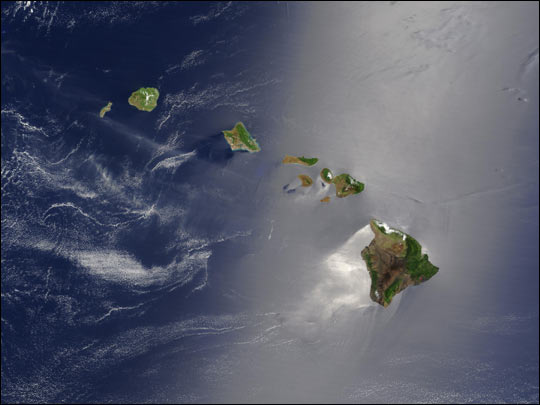How Did the Hawaiian Islands Form?

Scientists don't know all the details, but the process begins millions of years ago deep below the Pacific Ocean where the current islands are anchored to one of the rocky slabs that make up Earth’s outer crust. This slab creeps over a hot spot, or a fixed plume of heat below Earth’s surface that reaches a searing 2,500ºF (1,400ºC). Like a blowtorch, the heat transforms deep rocks into oozy magma.
The magma rises upward until it erupts onto the seafloor. When the sizzling lava (which is what magma is called when it erupts) hits the cooler water, it hardens into an underwater volcano. Over time — and numerous eruptions — the volcano packs on enough hardened lava to pop above the ocean surface, forming an island. As the rocky seafloor slab inches along, it carries the island beyond the hot spot, cutting it off from its lava source. The cycle of volcanic birth and extinction has left behind a trail of islands. The island of Hawaii, now atop the hot spot, formed 4.5 million years after Kauai.
A controversial alternative theory holds that an asteroid impact triggered the volcanism that created the islands. Either way, all this mountain building makes Hawaii an active spot for earthquakes, too.
Follow Life's Little Mysteries on Twitter @llmysteries. We're also on Facebook & Google+.
Get the world’s most fascinating discoveries delivered straight to your inbox.



